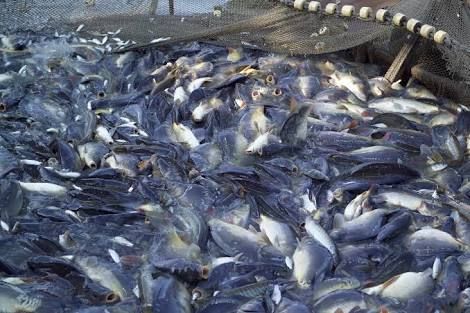Tilapia for Income in 2024 :Unlocking Maximum Profits through Sustainable Aquaculture
Tilapia for Income farming has emerged as a significant source of income for many farmers and entrepreneurs around the world. Known for its hardiness, rapid growth, and high market demand, tilapia is an ideal species for aquaculture. This article explores the various aspects of tilapia farming, including its benefits, goals, innovative ideas, topic suggestions for further research, and the advantages it offers to both small-scale and large-scale producers.
Contents
Benefits of Tilapia Farming
1. High Market Demand
Tilapia is one of the most consumed fish globally, making it a highly sought-after product in the seafood market. Its mild flavor and versatile culinary applications contribute to its popularity among consumers.
2. Fast Growth Rate
Tilapia is known for its rapid growth rate, which allows farmers to harvest and sell the fish within a relatively short period. This quick turnover can lead to increased profitability for producers.
3. Low Production Costs
Compared to other fish species, tilapia requires relatively low production costs. They can thrive in various environmental conditions and feed on a diverse diet, which can include inexpensive plant-based materials.
4. Sustainable Aquaculture
Tilapia farming can be practiced sustainably with proper management techniques. It has a lower environmental impact compared to other forms of livestock farming, making it an eco-friendly option for income generation.
5. Versatility in Farming Systems
Tilapia can be farmed in various systems, including ponds, tanks, and recirculating aquaculture systems (RAS). This versatility allows farmers to choose a method that best suits their resources and capabilities.

Goals of Tilapia Farming
1. Profit Maximization
The primary goal of tilapia farming is to maximize profits through efficient production and marketing strategies. Farmers aim to produce high-quality fish that meet market demands while minimizing costs.
2. Sustainable Practices
Adopting sustainable farming practices is essential to ensure the long-term viability of tilapia farming. This includes responsible resource management, waste reduction, and minimizing environmental impact.
3. Community Development
Tilapia farming can contribute to the economic development of rural communities by creating job opportunities and supporting local businesses. Farmers often aim to improve the livelihoods of their communities through successful aquaculture ventures.
4. Food Security
Tilapia farming can enhance food security by providing a reliable source of protein. This is particularly important in regions where access to affordable and nutritious food is limited.
Innovative Ideas for Tilapia Farming
1. Integrated Aquaponics Systems
Combining tilapia farming with hydroponic plant cultivation creates an integrated aquaponics system. The fish waste provides nutrients for the plants, while the plants help filter the water for the fish. This symbiotic relationship can increase overall productivity and sustainability.
2. Organic Tilapia Farming
Organic tilapia farming involves raising fish without synthetic chemicals or genetically modified organisms (GMOs). This can cater to the growing market demand for organic products and command higher prices.
3. Value-Added Products
Developing value-added products such as tilapia fillets, fish sausages, and smoked tilapia can diversify income streams and increase profitability. These products can appeal to different market segments and provide higher returns.
4. Direct-to-Consumer Sales
Selling tilapia directly to consumers through farmers’ markets, online platforms, or community-supported agriculture (CSA) programs can increase profit margins. This approach eliminates intermediaries and allows farmers to build relationships with their customers.
5. Eco-Friendly Packaging
Using eco-friendly packaging for tilapia products can attract environmentally conscious consumers. Sustainable packaging options, such as biodegradable materials or reusable containers, can enhance the brand’s reputation and market appeal.

Topic Suggestions for Further Research
1. Genetic Improvement of Tilapia
Tilapia for Income,Research on genetic improvement can focus on developing strains of tilapia with enhanced growth rates, disease resistance, and improved feed conversion efficiency. This can lead to more efficient and profitable farming practices.
2. Sustainable Feed Alternatives
Tilapia for Income,Investigating sustainable feed alternatives, such as insect-based protein or algae, can reduce the reliance on conventional fish feed ingredients like fishmeal and soy. This can lower production costs and minimize environmental impact.
3. Disease Management Strategies
Tilapia for Income,Exploring effective disease management strategies is crucial for maintaining healthy tilapia populations. Research can focus on developing vaccines, probiotics, and other preventive measures to reduce disease outbreaks.
4. Climate Resilience in Tilapia Farming
Tilapia for Income,Studying the impacts of climate change on tilapia farming and developing adaptive strategies can help farmers mitigate risks associated with extreme weather events, temperature fluctuations, and water scarcity.
5. Market Analysis and Consumer Preferences
Tilapia for Income,Conducting market analysis and understanding consumer preferences can provide valuable insights for tilapia farmers. This research can help identify trends, target specific market segments, and develop effective marketing strategies.

Advantages of Tilapia for Income
1. Accessibility for Small-Scale Farmers
Tilapia for Income farming is accessible to small-scale farmers due to its relatively low initial investment and operational costs. This makes it an attractive option for individuals looking to start an aquaculture business with limited resources.
2. Flexibility in Production Scale
Tilapia for Income farming can be scaled up or down based on the farmer’s resources and market demand. This flexibility allows producers to adjust their operations to meet changing market conditions and optimize profitability.
3. Year-Round Production
Tilapia for Income With proper management and controlled environments, tilapia can be produced year-round. This ensures a consistent supply of fish to meet market demands and provides a steady source of income for farmers.
4. Nutritional Benefits
Tilapia for Income is a nutritious source of protein, vitamins, and minerals. It is low in fat and rich in omega-3 fatty acids, making it a healthy dietary option for consumers. Promoting the nutritional benefits of tilapia can increase its market appeal.
5. Employment Opportunities
Tilapia for Income farming creates employment opportunities in various aspects of the supply chain, including hatchery management, fish rearing, feed production, processing, and distribution. This can contribute to economic growth and reduce unemployment rates.
Tilapia for Income farming offers numerous benefits and opportunities for income generation. Its high market demand, rapid growth rate, and sustainable farming practices make it an attractive option for both small-scale and large-scale producers. By setting clear goals, implementing innovative ideas, and conducting further research, farmers can maximize their profits and contribute to the development of their communities. The advantages of tilapia farming, including its accessibility, flexibility, and nutritional benefits, further enhance its potential as a viable and profitable aquaculture venture. As the demand for sustainable seafood continues to grow, tilapia farming holds promise for meeting the needs of consumers while supporting economic and environmental sustainability.






